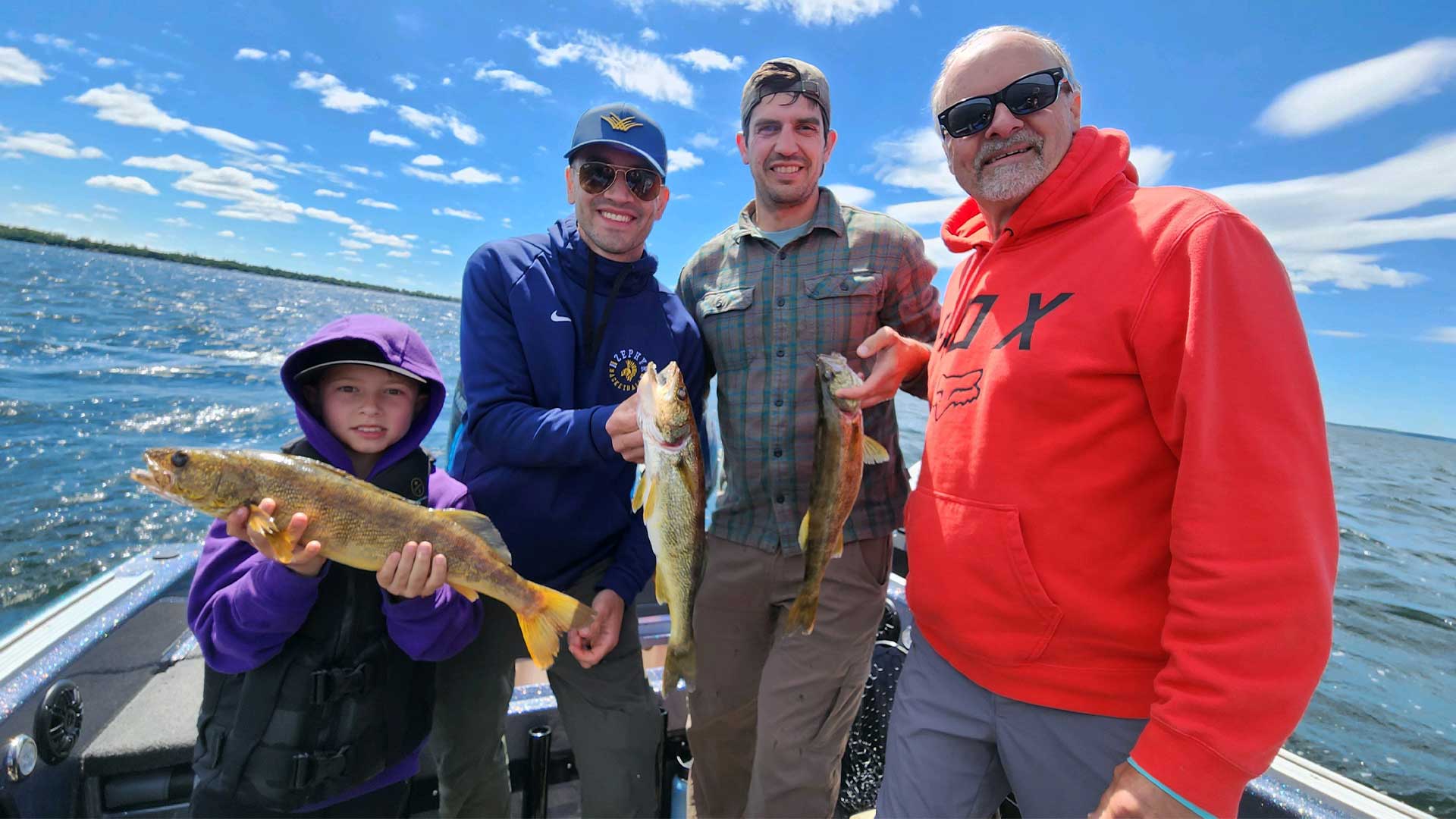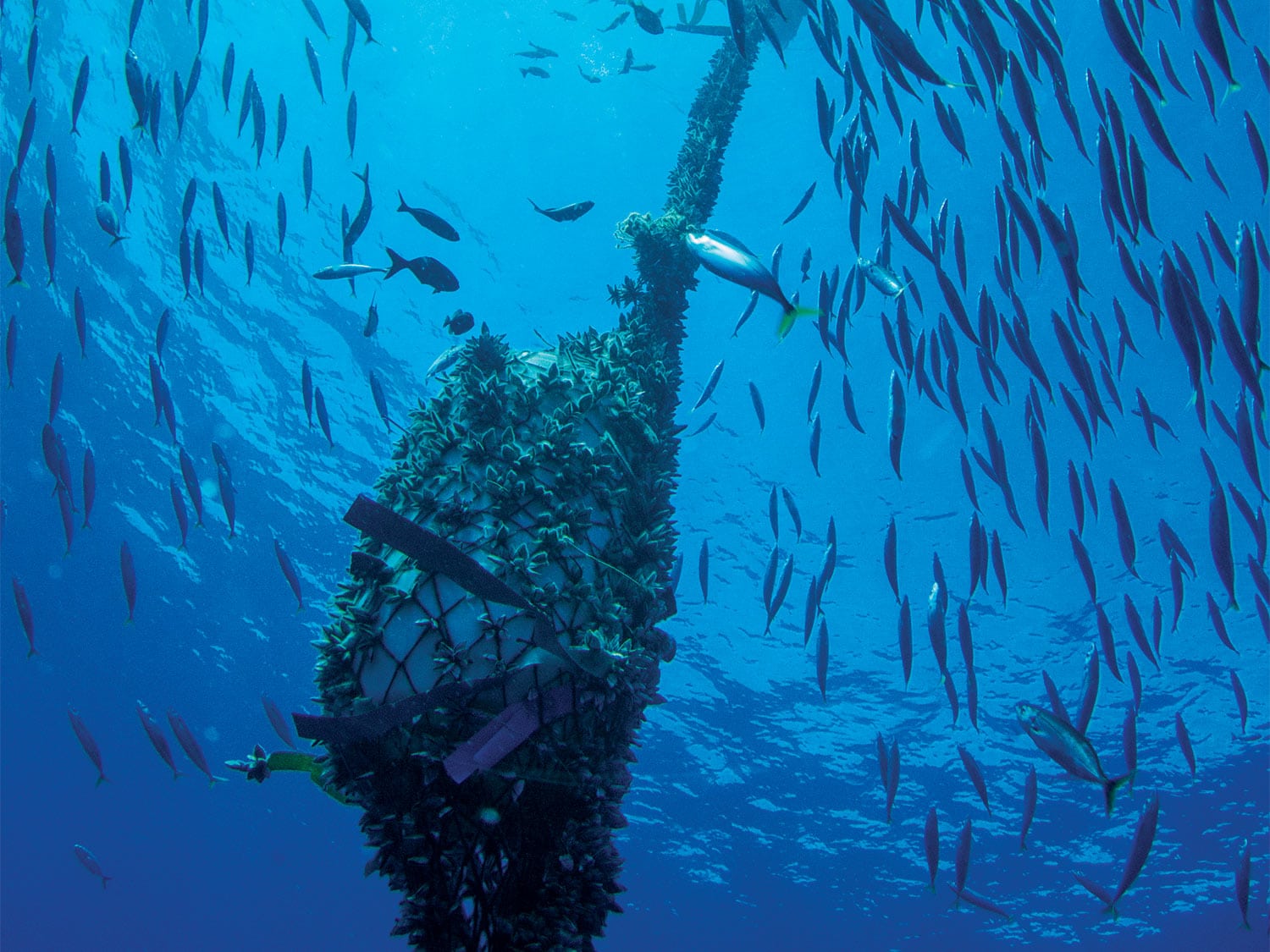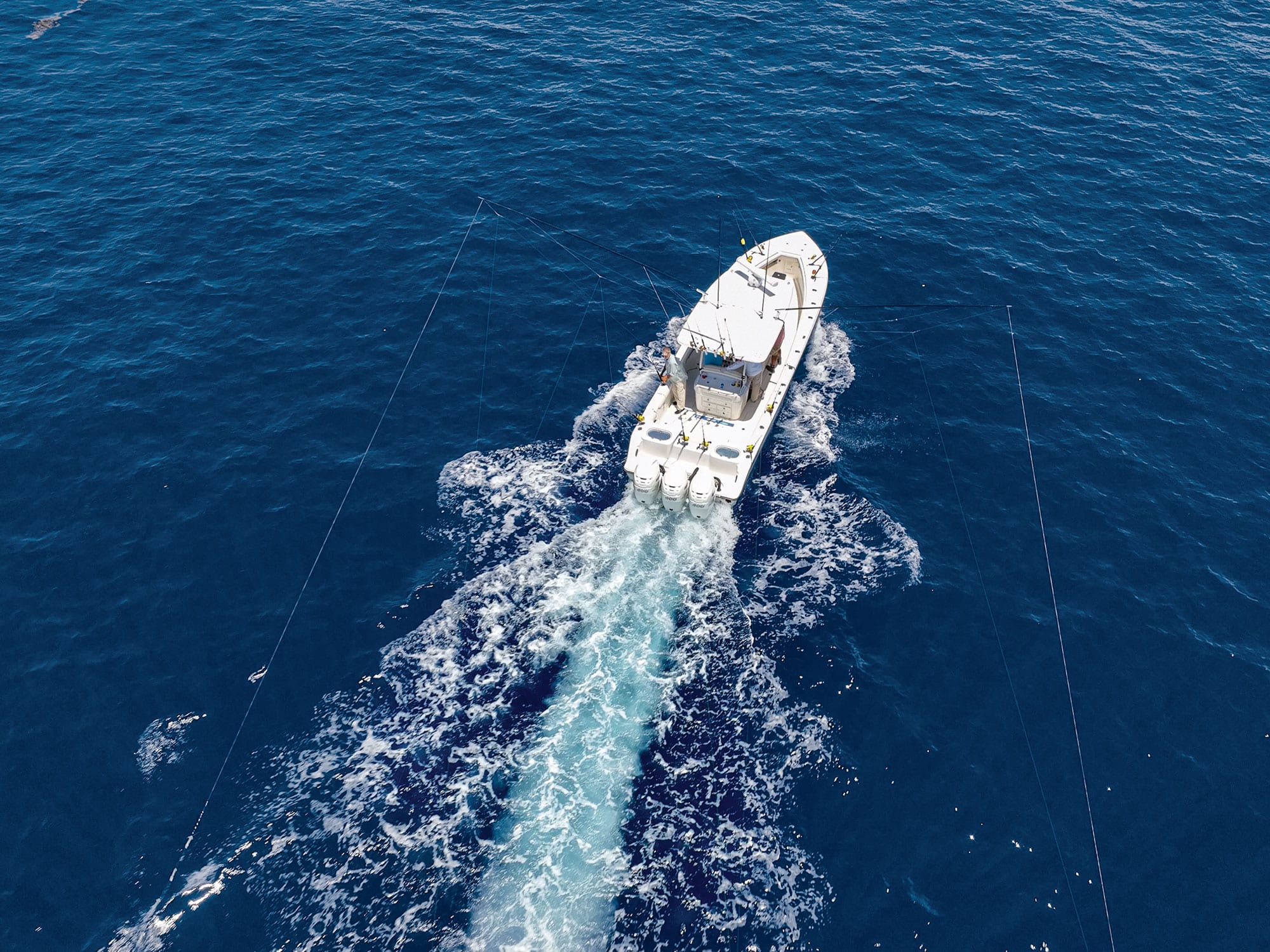Ocean fishing can be an incredibly rewarding experience, offering both sport and sustenance. However, understanding oceanic phenomena like upwellings can significantly impact your fishing success. Upwellings bring nutrient-rich waters from the ocean depths to the surface, creating fertile fishing grounds that attract a variety of marine life. Consequently, learning about upwellings and how they benefit ocean fishermen is essential for improving fishing strategies and results. Therefore, this comprehensive guide explores the science behind upwellings, their benefits for fishing, and practical tips for capitalizing on these natural occurrences. By delving into these aspects, you can enhance your ocean fishing experience and enjoy more fruitful outings.
Understanding the Science Behind Upwellings
Upwellings are a crucial oceanographic phenomenon that significantly affects marine ecosystems. Understanding the science behind upwellings provides valuable insights into their impact on fishing. Therefore, exploring the mechanisms of upwellings is essential.

What Are Upwellings?
Upwellings occur when deep, cold, and nutrient-rich water rises to the ocean surface, replacing the warmer surface water. This process is usually driven by wind patterns and the Earth’s rotation, particularly in coastal regions where the wind blows parallel to the shoreline. Upwelling zones are characterized by cooler water temperatures, high nutrient levels, and increased biological productivity. By understanding what upwellings are, fishermen can identify areas rich in marine life, improving their chances of successful fishing. Therefore, recognizing the value of upwelling phenomena is crucial.
Causes of Upwellings
Several factors contribute to the occurrence of upwellings. The primary driver is wind, which, when blowing parallel to the coast, causes the surface water to move away from the shore. This movement creates a void that deep water fills, bringing nutrients to the surface. The Coriolis effect, due to the Earth’s rotation, also plays a role by deflecting the movement of water and enhancing the upwelling process. Coastal geography and ocean currents further influence the intensity and location of upwellings. By understanding the causes of upwellings, fishermen can predict and locate these productive zones. Therefore, recognizing the importance of environmental factors is essential.
Impact on Marine Ecosystems
Upwellings have a profound impact on marine ecosystems by creating nutrient-rich environments that support diverse and abundant marine life. The influx of nutrients promotes the growth of phytoplankton, the foundational producers in the ocean food web. This surge in primary production attracts zooplankton, small fish, and larger predators, creating thriving ecosystems. These rich feeding grounds draw numerous fish species, making upwelling zones prime fishing areas. By understanding the impact of upwellings on marine ecosystems, fishermen can target areas with high biological productivity. Therefore, recognizing the significance of ecological dynamics is crucial.

Benefits of Upwellings for Ocean Fishermen
Upwellings offer several benefits that can significantly enhance ocean fishing success. Understanding these benefits helps fishermen capitalize on these natural phenomena. Therefore, exploring the advantages of upwellings is essential.
Increased Fish Populations
One of the most significant benefits of upwellings is the increase in fish populations. The nutrient-rich waters support the growth of phytoplankton, which, in turn, sustains higher levels of zooplankton and small fish. These smaller organisms attract larger fish and marine predators, creating dense populations of target species for fishermen. Popular game fish, such as tuna, mackerel, and sardines, are often found in upwelling zones due to the ample food supply. By understanding the correlation between upwellings and increased fish populations, fishermen can improve their catch rates. Therefore, recognizing the value of nutrient-rich waters is crucial.
Enhanced Fish Size and Health
Fish found in upwelling zones tend to be larger and healthier due to the abundant food supply and optimal growing conditions. The high nutrient levels promote rapid growth and robust health in marine organisms, including commercially important fish species. This results in higher quality catches, with larger and more desirable fish sizes. For both commercial and recreational fishermen, targeting upwelling zones can lead to more lucrative and satisfying fishing trips. By understanding the impact of upwellings on fish size and health, fishermen can prioritize these areas for better-quality catches. Therefore, recognizing the significance of optimal growth conditions is essential.
Diverse Fishing Opportunities
Upwellings create diverse fishing opportunities by supporting a wide range of marine species. The nutrient-rich waters attract various fish, including pelagic species like tuna and swordfish, as well as bottom-dwellers like halibut and snapper. This biodiversity provides ocean fishermen with the chance to target multiple species during a single trip, enhancing the overall fishing experience. Additionally, the presence of apex predators, such as sharks and dolphins, adds an exciting element for sport fishermen. By understanding the diverse fishing opportunities created by upwellings, fishermen can diversify their strategies and targets. Therefore, recognizing the importance of ecosystem diversity is crucial.

Practical Tips for Fishing in Upwelling Zones
Fishing in upwelling zones requires specific strategies and techniques to maximize success. Understanding these practical tips helps fishermen effectively exploit these productive areas. Therefore, exploring fishing strategies in upwelling zones is essential.
Identifying Upwelling Zones
Identifying upwelling zones is the first step to successful fishing in these areas. Look for signs of cooler water temperatures and high biological activity, such as large schools of fish, seabird activity, and marine mammal presence. Upwelling zones are often located along coastal regions with steep continental shelves and near oceanic features like headlands and seamounts. Utilizing satellite data and oceanographic tools, such as sea surface temperature maps and chlorophyll concentration charts, can help pinpoint upwelling areas. By understanding how to identify upwelling zones, fishermen can target these productive areas more accurately. Therefore, recognizing the significance of environmental cues is crucial.
Choosing the Right Bait and Lures
Choosing the right bait and lures is crucial for attracting fish in upwelling zones, where the abundance of natural food sources can make fish more selective. Match the hatch by using bait and lures that mimic the local prey species, such as anchovies, sardines, and squid. Live bait and fresh-cut bait are particularly effective in these areas. Additionally, selecting lures with realistic colors, shapes, and movements can increase your chances of a bite. Experiment with different bait and lure combinations to determine what works best in the specific upwelling zone you are fishing. By understanding the importance of choosing the right bait and lures, fishermen can optimize their chances of success. Therefore, recognizing the value of effective bait selection is crucial.
Adjusting Fishing Techniques
Adjusting fishing techniques to suit the conditions in upwelling zones can significantly improve your catch rates. Trolling is an effective method for targeting pelagic species in upwelling areas, allowing you to cover a large area and present your lure or bait at various depths. Drift fishing is also beneficial, as it allows you to work the water column and adapt to changing currents and fish movements. Jigging can be particularly effective for bottom-dwelling species attracted to the nutrient-rich waters. Use a fish finder or sonar to locate fish and adjust your techniques accordingly. By understanding the need to adjust fishing techniques, fishermen can adapt to the dynamic conditions of upwelling zones. Therefore, recognizing the importance of versatile fishing strategies is crucial.

Environmental and Conservation Considerations
While upwellings offer significant benefits for fishing, it is essential to consider environmental and conservation aspects. Understanding these considerations helps ensure sustainable fishing practices. Therefore, exploring environmental impacts and conservation strategies is essential.
Promoting Sustainable Fishing Practices
Promoting sustainable fishing practices in upwelling zones ensures that these productive areas remain viable for future generations. Adhere to local regulations and catch limits to prevent overfishing and ensure the health of fish populations. Practice catch and release for non-target species and undersized fish to support conservation efforts. Use selective fishing gear that minimizes bycatch and reduces the impact on the marine ecosystem. By understanding the importance of sustainable fishing practices, fishermen can contribute to the long-term health of upwelling zones. Therefore, recognizing the value of responsible fishing is crucial.
Protecting Marine Ecosystems
Protecting marine ecosystems in upwelling zones is vital for maintaining their productivity and biodiversity. Support efforts to reduce pollution, such as minimizing plastic waste and using environmentally friendly fishing gear. Participate in habitat restoration projects that enhance the health of coastal and marine environments. Respect protected areas and marine reserves, which serve as critical habitats for various species. By understanding the importance of protecting marine ecosystems, fishermen can help preserve the natural balance and richness of upwelling zones. Therefore, recognizing the significance of conservation efforts is crucial.
Supporting Research and Monitoring
Supporting research and monitoring efforts helps improve our understanding of upwelling processes and their impact on marine life. Collaborate with scientific organizations and participate in citizen science projects that collect valuable data on upwelling zones and fish populations. Stay informed about ongoing research and contribute to initiatives that promote sustainable management of marine resources. By understanding the importance of supporting research and monitoring, fishermen can contribute to the knowledge and conservation of upwelling ecosystems. Therefore, recognizing the value of scientific collaboration is crucial.

Addressing Common Questions About Upwellings and Fishing
Understanding common questions about upwellings and their impact on fishing provides clarity and enhances knowledge. Knowledge of these answers ensures better preparation and practice. Therefore, exploring common questions is essential.
How Do Upwellings Affect Seasonal Fishing Patterns?
Upwellings can significantly influence seasonal fishing patterns by creating periods of high biological productivity. During upwelling events, nutrient-rich waters support increased phytoplankton growth, attracting fish and other marine life. These events often coincide with favorable fishing seasons, such as spring and summer, when winds and ocean currents promote upwelling processes. Fishermen can capitalize on these periods by targeting upwelling zones and adjusting their fishing strategies to match the heightened activity. By understanding the seasonal influence of upwellings, fishermen can plan their trips more effectively. Therefore, recognizing the importance of timing is crucial.
Are Upwellings Predictable?
While upwellings can be influenced by consistent environmental factors, their timing and intensity can vary. Monitoring local wind patterns, ocean currents, and sea surface temperatures can provide clues about potential upwelling events. Additionally, satellite data and oceanographic tools can help track and predict upwelling zones. However, natural variability and changing climate conditions can affect the predictability of upwellings. By understanding the factors that influence upwellings, fishermen can stay informed and adapt to varying conditions. Therefore, recognizing the need for continuous observation is crucial.
Addressing Common Misconceptions About Upwellings and Fishing
Addressing common misconceptions about upwellings and their impact on fishing provides accurate information and dispels unwarranted concerns. Clearing up misunderstandings ensures an informed perspective. Therefore, exploring common misconceptions is important.
Misconception: Upwellings Only Benefit Commercial Fishermen
A common misconception is that upwellings only benefit commercial fishermen. In reality, upwellings create productive fishing grounds that are advantageous for both commercial and recreational fishermen. The increased fish populations, diverse species, and improved catch quality benefit anglers of all kinds. Recreational fishermen can enjoy more fruitful and exciting fishing experiences, while commercial fishermen can achieve more efficient and profitable harvests. By understanding the universal benefits of upwellings, fishermen can appreciate their value for all fishing activities. Therefore, dispelling this misconception highlights the inclusivity of upwelling benefits.
Misconception: Upwellings Are Harmful to Marine Life
Another misconception is that upwellings are harmful to marine life. In reality, upwellings are natural processes that enhance marine ecosystems by bringing essential nutrients to the surface. These nutrients support the growth of phytoplankton, which forms the base of the ocean food web. The resulting increase in biological productivity benefits a wide range of marine species, from small fish to large predators. While upwellings can create temporary stress conditions, such as fluctuations in temperature and oxygen levels, their overall impact is positive and vital for ocean health. By understanding the ecological benefits of upwellings, fishermen can recognize their importance for marine life. Therefore, dispelling this myth emphasizes the positive role of upwellings.
Conclusion: Leveraging Upwellings for Enhanced Fishing Success
Leveraging upwellings involves understanding their science, benefits, and practical applications for ocean fishing. Proper preparation, including identifying upwelling zones and selecting the right bait and techniques, ensures improved fishing outcomes.
Exploring critical aspects such as increased fish populations, enhanced fish health, and diverse fishing opportunities ensures comprehensive knowledge and practice. Recognizing the importance of environmental and conservation considerations enhances sustainability and long-term success.
By engaging with these elements, you can maximize the benefits of upwellings and enjoy more productive and fulfilling fishing experiences. Therefore, whether you are a novice or experienced ocean fisherman, understanding the essential considerations and advantages of upwellings offers practical and valuable insights. Embrace the opportunity to improve your fishing success by leveraging the natural phenomenon of upwellings!
